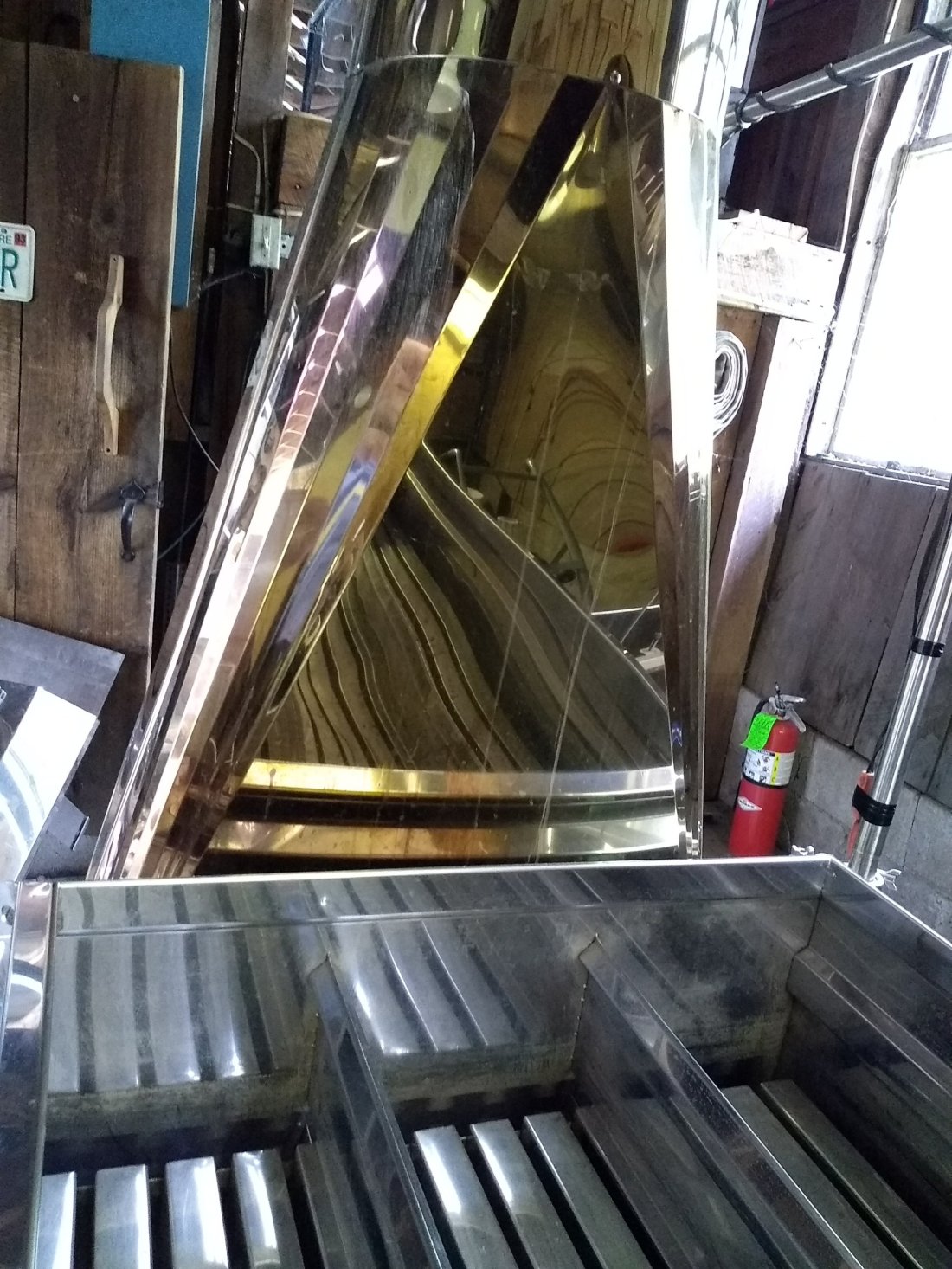After a delightful 3 hours at the Andres Institute of Art we were hungry. I ordered the Parker platter with a pumpkin pancake, fried egg, pan roasted potatoes, hash, and their own maple syrup.
Roy had French toast stuffed with a raspberry, blueberry cream (yogurt compote was Roy’s description) and ate half my pancake, since it was about 8 inches in diameter!
After lunch, we walked to the entrance of the Sugar House, and I asked if we could come in. The gentleman said yes and took us to the oldest part of the “house”. He explained that Mr. Parker liked to reuse buildings as much as possible, so the “house” is actually 3 different sheds stubbed onto one another.
So, here are the tap lines that go from the maple tree(s) downhill to the gathering container. Our guide said the lines are hard to unwind around each tree in the cold of the spring so he labels each strand as to the farm the strand is set up for. Then he has a fighting chance of getting the tapping done expeditiously.

Here are the large containers sap goes into. They are the same size and shape as the rain barrels we had at 512 Lisbeth Road.

Here is a 500 gallon tank that holds the sap that flows into the evaporator. It’s in the air for gravity feed.

Here’s the pipe from the tank into the evaporator.

And here’s the pipe on the right side of the pic with a look at the evaporator tank and all the gills. They are shaped like i-beams to get maximum heating surface around the sap.

Here’s the firebox for the evaporator. Our guide explained some operations use gas, but connoisseurs complain that that method tastes bad.

The lumber is cut into 28 inch lengths to fit right in. The guide said they hired a 21 year old “evaporator whisperer” who keeps it going at just the correct temp for hours at a time.
Here’s some of their lumber cache.

So when the sap goes from 2% sugar to 67% sugar, it’s done. They can store it awhile before bottling or go right into bottling.
On the stove they heat it to 190° and add diatomaceous Earth to catch any sediments or impurities.

Here’s the multi-stage filter that catches the diatomaceous Earth particles.

Finally, it gets to the bottling station, which keeps the syrup at 190° the whole time. It’s like a slow cooker with heating elements in the 4 walls.

Our guide explained that the industry renamed Grade B to Very Dark Amber. It was an image thing. Here’s the new grading system from their website

And here are all the colors they produce.
 I learned that all the grades have the same mineral content, it’s just a matter of stronger flavor or weaker flavor.
I learned that all the grades have the same mineral content, it’s just a matter of stronger flavor or weaker flavor.
We bought a large plastic jug of their darkest syrup for $22. Can’t wait to finish the old jug to get into the new.
Here’s a little humor to end the blog, hung in the Parker Sugar House:

This is wonderful! Davey was just asking me about maple syrup, so now I can show him your article, thank you!!
LikeLike